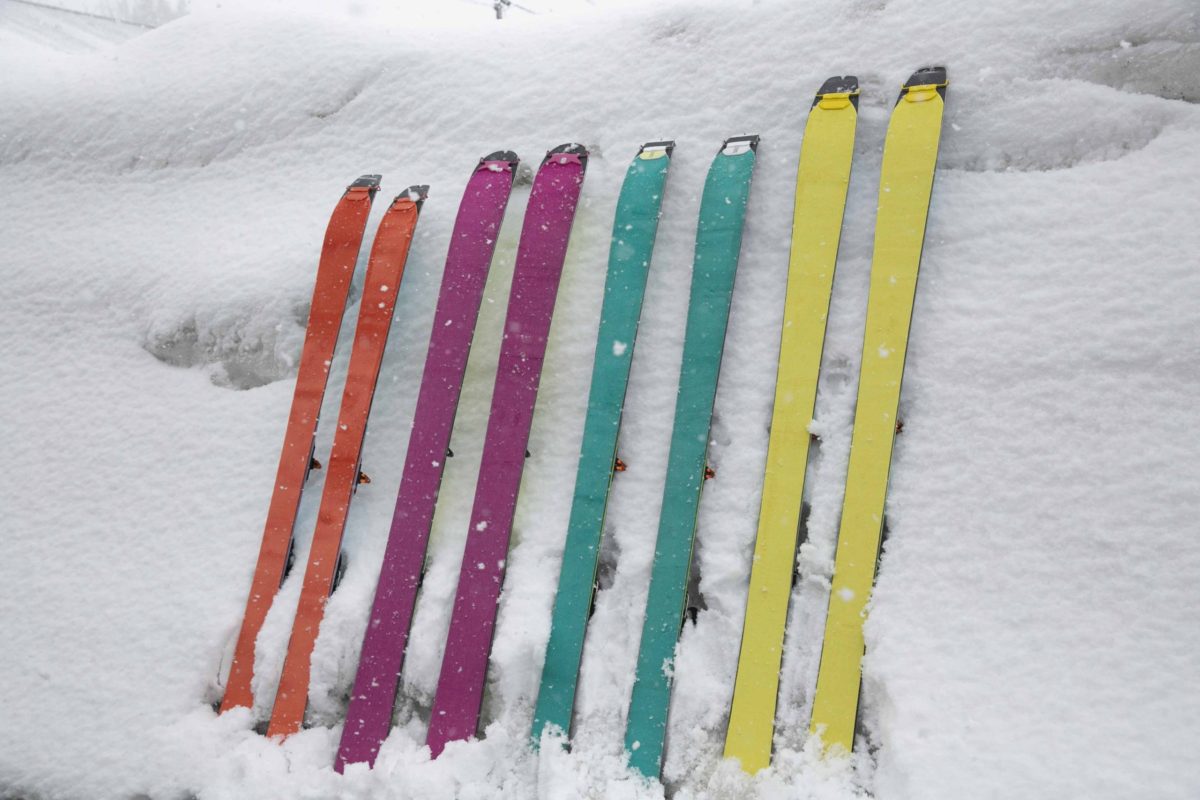Seals (climbing skins) are absolutely essential for those who want to go backcountry skiing and enjoy climbing snowy mountains.
I know what it is, but I don't know the specifics. You may think you know something, but in fact you may have misunderstood it. This time, let's take a closer look at stickers, which are indispensable for climbing mountains on skis.
First of all, what is a seal?
A sticker is an item that allows you to climb slopes by attaching it to the back of your ski or splitboard. You can go forward, but it's a good thing that doesn't fall behind.
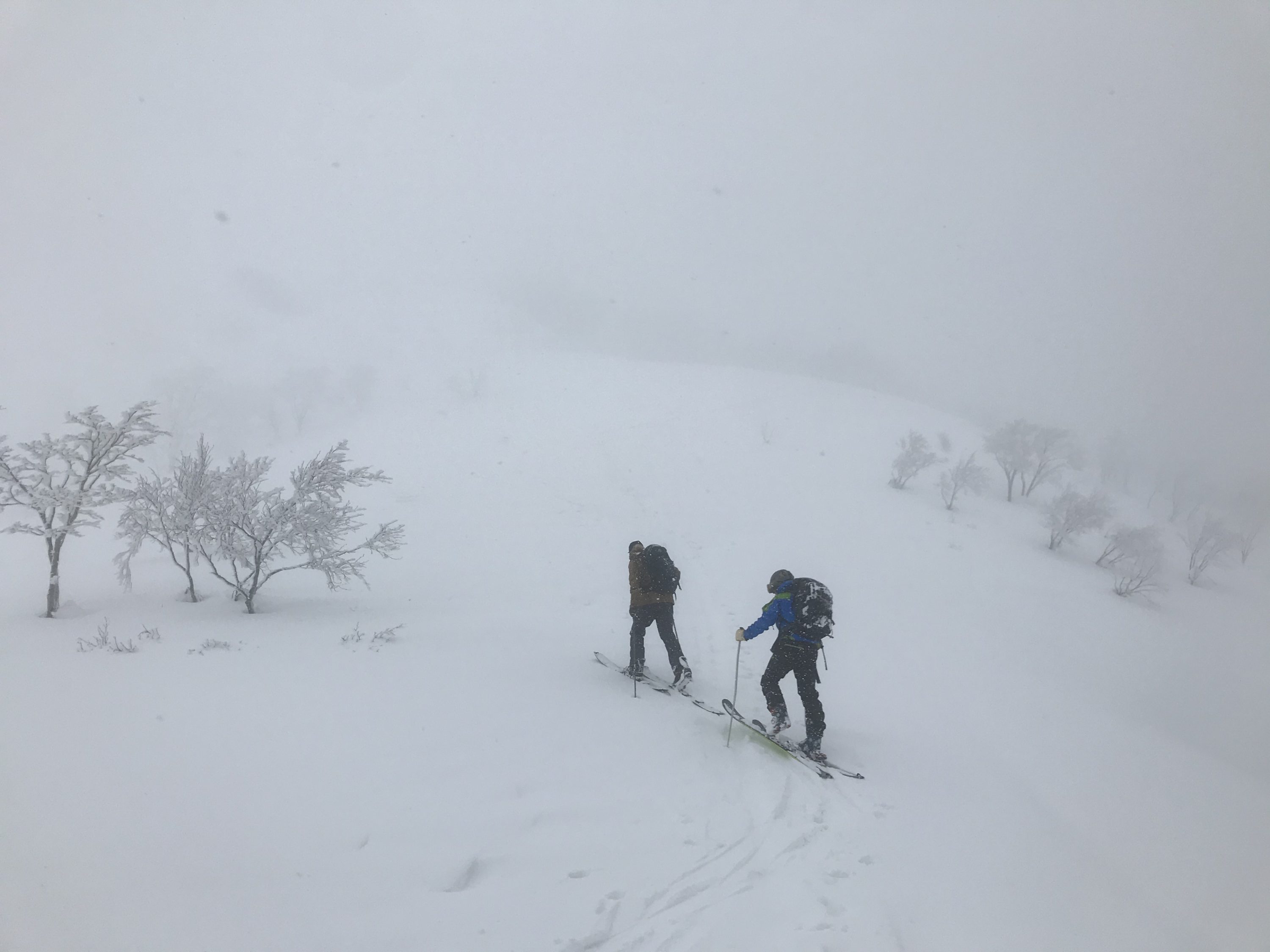
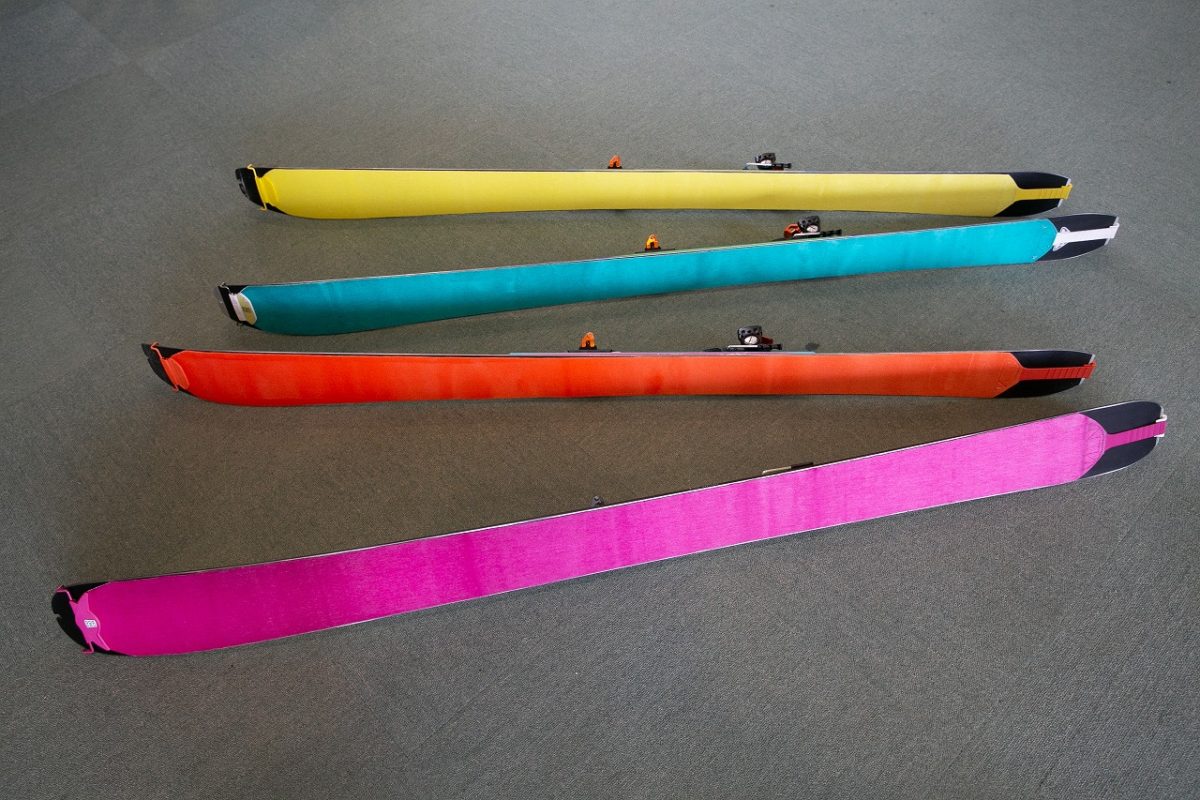
The sticker has glue on the back to adhere to the sole of the ski. Furthermore, by fixing the stoppers on the top and tail, it can be attached to the board.
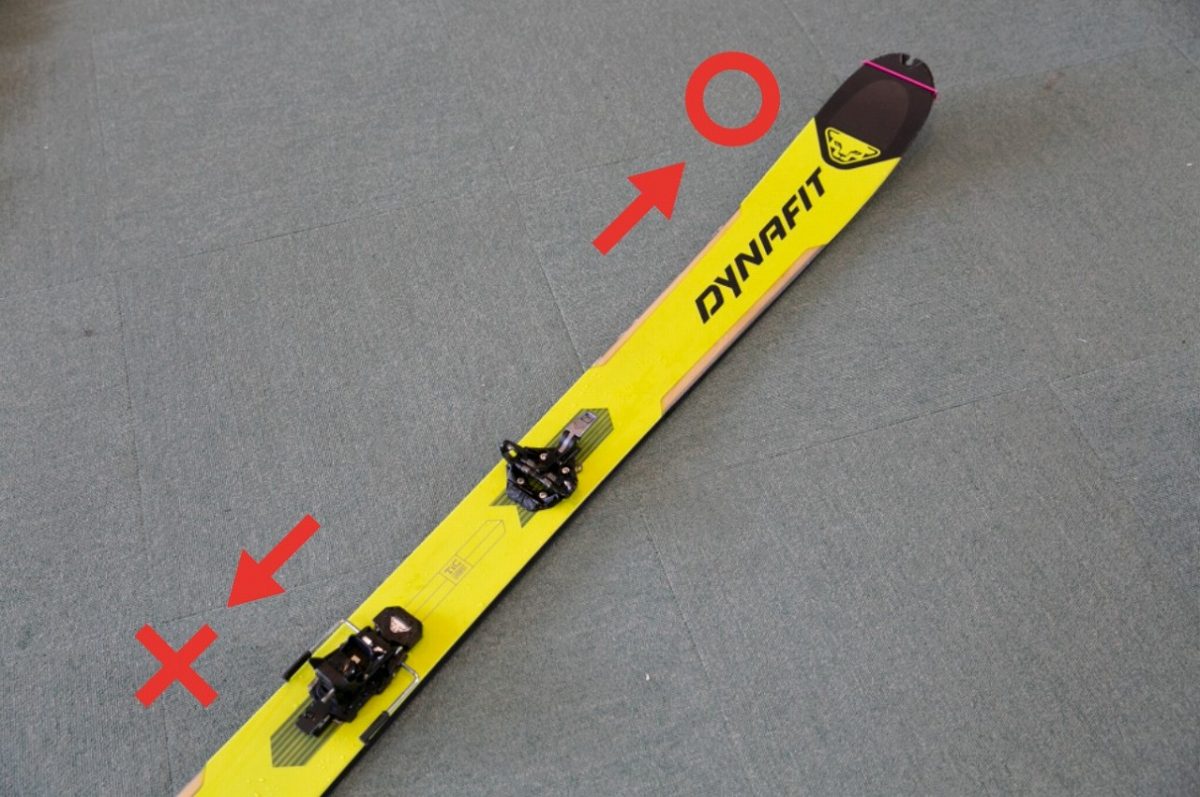
Structure of the seal
The seal basically has a four-layer structure.
From the snow contact surface, hair, waterproof sheet, rubber to put glue on, glue
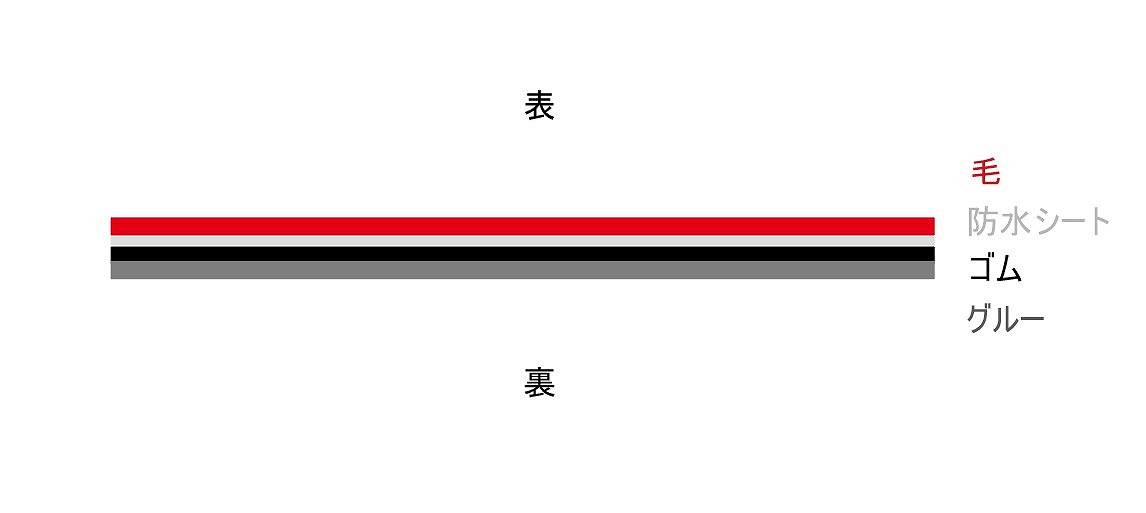
This is basically the structure, but depending on the seal manufacturer, this may be three layers of waterproof hair or two layers of adhesive rubber on which the glue is placed. Even today, companies are making efforts to brush up on the materials and structures of seals, and they continue to evolve year by year.
For example, POMOCA has a 3-layer structure, with special waterproof hair woven into the snow-contact side of the rubber just like nylon and mohair, eliminating the waterproof sheet. Furthermore, CONTOUR realizes a two-layer structure by integrating rubber and glue.
Seals were originally made using seal fur.
However, improvements in fiber technology have led to the replacement of seal hair with fibers that perform better. Currently, basically two types of fibers are used for seals: nylon and artificial mohair.
Mohair refers to the hair of the angora rabbit, but now we are using artificial hair that has similar functions to mohair.
Nylon is that nylon commonly used in the clothes and tights we wear. Each of these two types of bristles exhibits different performance.
Mohair has good glide performance, that is, slipperiness, and nylon has excellent grip performance. Seal not only climbs, but sometimes has to slide down if it's a bit of a downhill. At that time, gliding performance also becomes important.
By adjusting the blending balance of these two bristles, we are creating products that give the ideal glide and grip performance.
Furthermore, the performance changes depending on the length of the hair, and the durability of the seal also differs. By changing the composition and length of the bristles, a variety of seals have been created for various purposes.
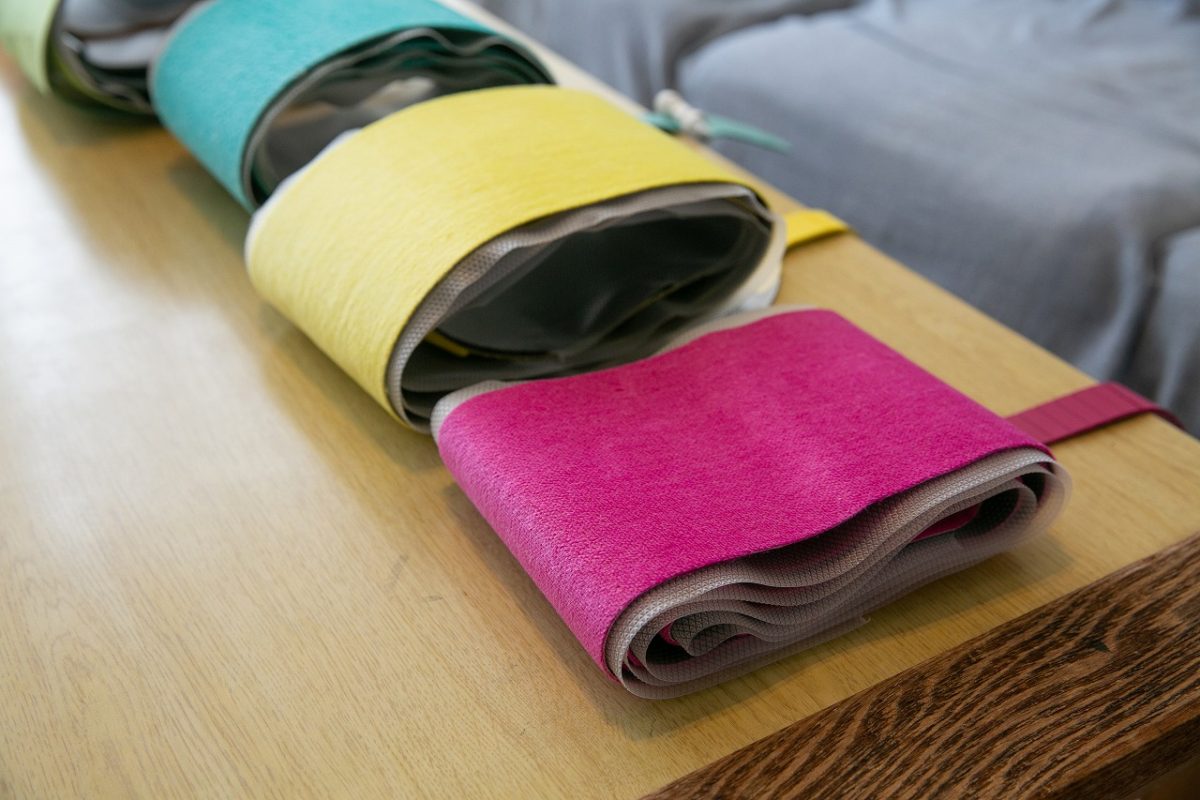
About glue
Glue performance is just as important as whether the hair is good or bad.
If you can't use the glue to stick the sticker to the board in the snowy mountains, you won't be able to climb the mountain at that point. Most tours go as a team, so if one person can't climb, the whole team will have to descend. If that happens, the fun tour will end with incomplete combustion. To avoid that, it is important that the glue works.
Reasons for not being able to use glue include the following.
・Repeatedly climbing back up, putting on and taking off the seal increases and freezes.
・If a skier with a lot of weight or luggage uses a thin glue seal, it will slip and freeze.
(Using a thin sheet makes it easier for snow to slip from the side, making it easier to freeze.)・In many cases, it freezes and does not stick to the board.
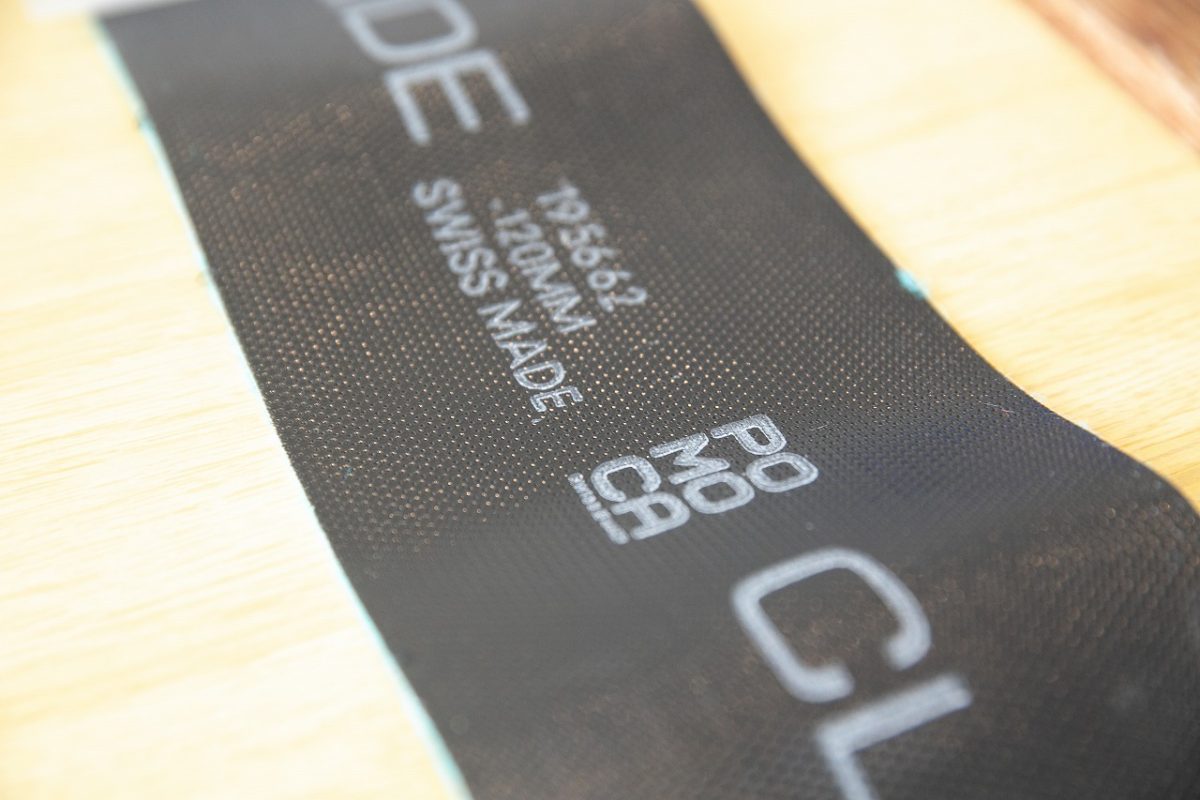
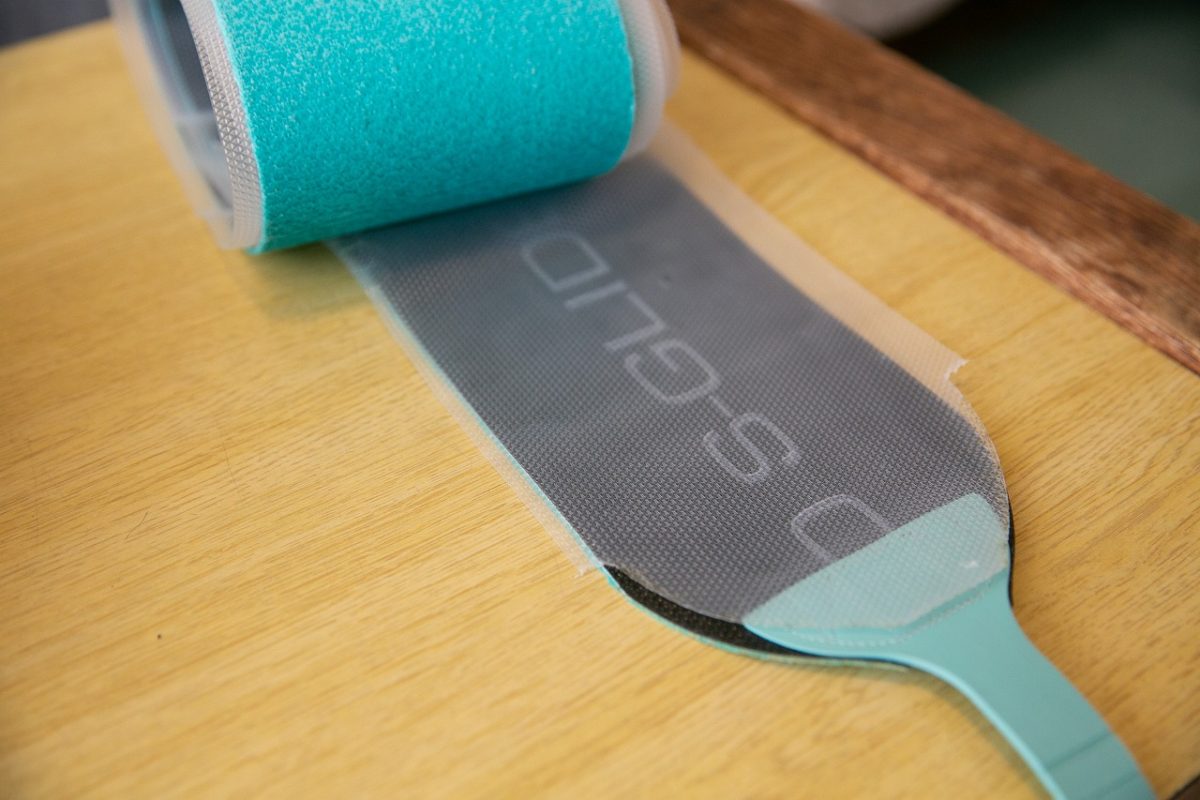
The seal makers currently available in Japan are the following brands.
-POMOCA
-G3
-BLACKDIAMOND
-CONTOUR
-COLLTEX
Each seal manufacturer may have slightly different usage and storage methods.
However, the basic usage and structure are the same. The strengths of each company are different, and the ease of use differs depending on user preferences.
For example, the G3 has good quality bristles and excellent glide and grip.
BLACKDIAMOND is glued firmly, so you can continue to use it without freezing even in the backcountry in low temperatures. In the case of POMOCA, all models can be glued together. There is no need to attach or remove the cheat sheet used for protection, making it easy to handle on site.
How to choose a seal
So what kind of product should I actually choose?
I would like to take a look at POMOCA products as an example.
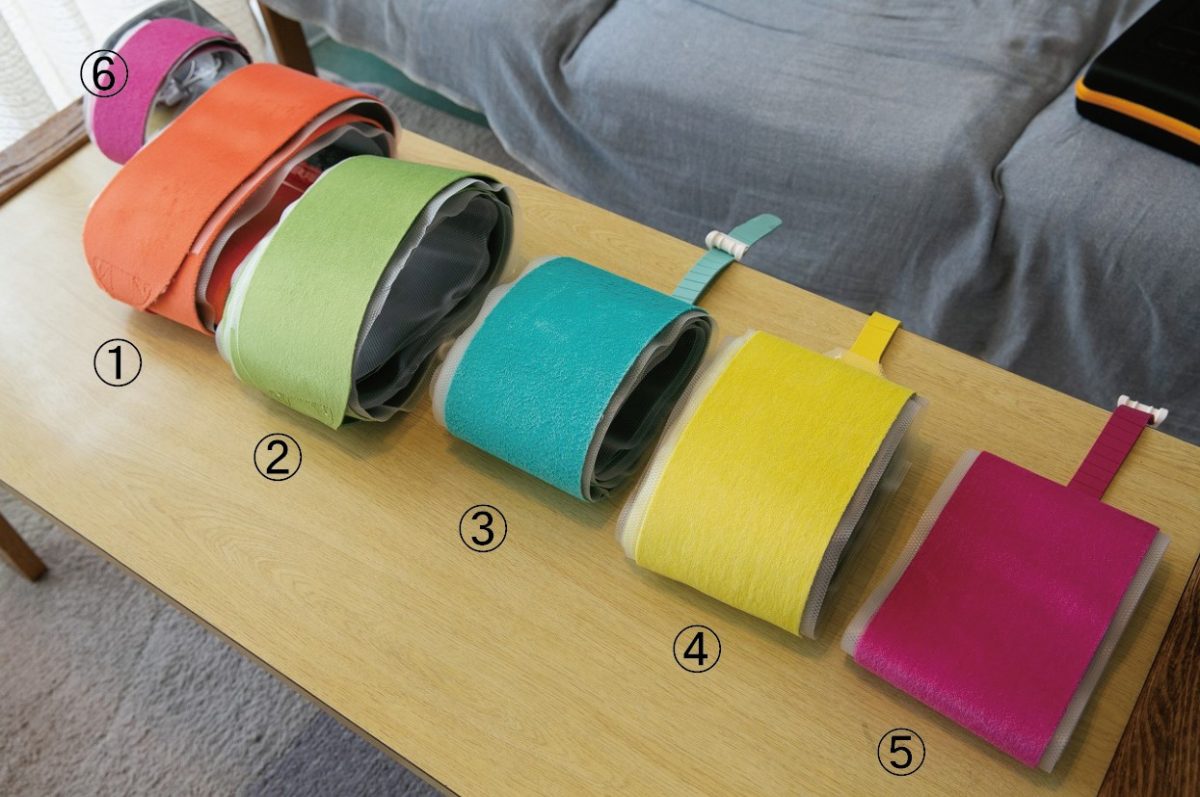
POMOCA products are roughly divided into 6 types.
1) 100% nylon material
2) 100% mohair material
3) 70% mohair, 30% nylon
4) 70% mohair, 30% nylon
5) Based on stickers for mountain races Developed lightweight and compact seal
6) Seal for mountain races
From top to bottom, 100% nylon seal with excellent grip.
Easy to use for people who are not used to climbing. However, as you can see from the photos, nylon is bulky and somewhat heavy. The second sticker is 100% mohair.
It glides well, is designed for experienced climbers, and is lightweight. Both No. 3 and No. 4 seals are made of 70% mohair and 30% nylon, making them easy to use for general users.
The difference between the two lies in the length and density of the hair. No. 3 has longer and denser bristles, so it weighs a little more, but it is more waterproof and water repellent than any other model. Therefore, it is a product that is easy to handle, from beginners to guides carrying large luggage. The No. 6 race seal is the minimum size and compact. And the tail stopper is omitted for easy removal.
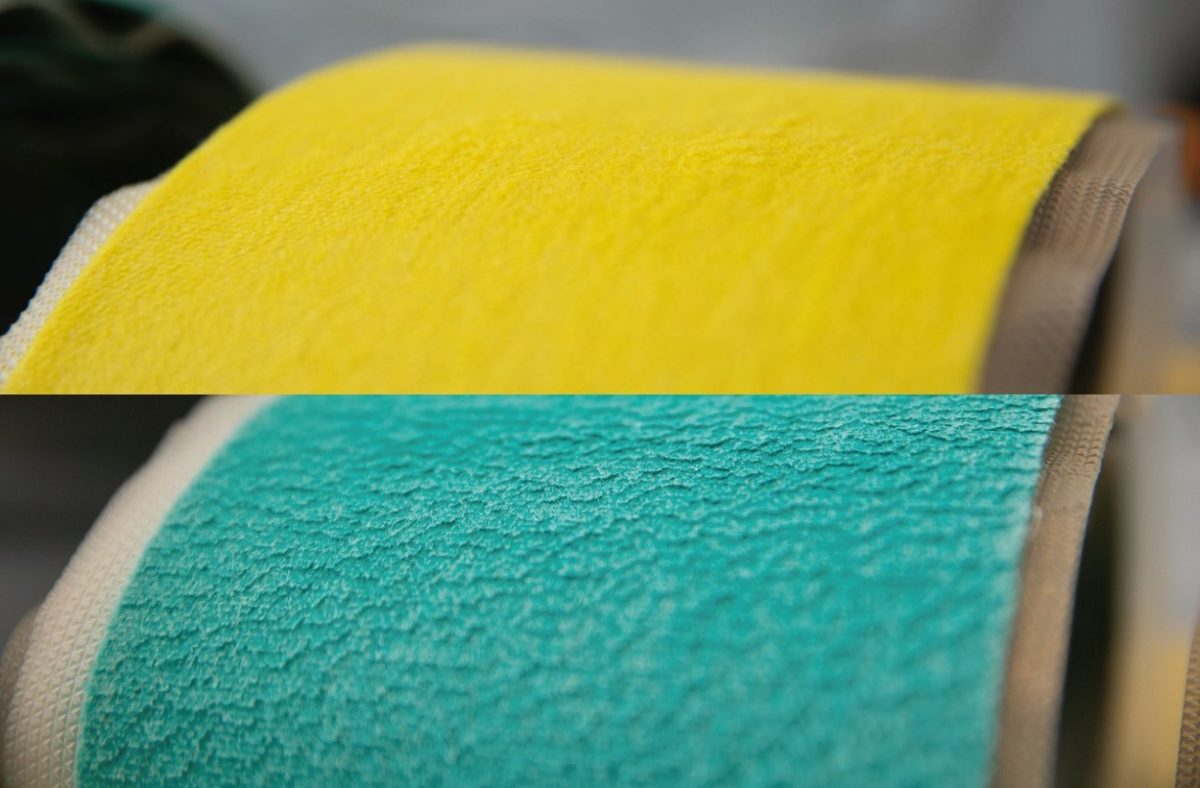
the 3rd sticker hairs are different in length, is because This wax will fall off after one or two tours.
How to choose
The criteria for choosing a seal are which mountain to go to, what kind of equipment to use, and how much climbing technique to use. If you often walk on flat ground, mohair is easier to walk because of its excellent glide. If you want to lighten your luggage and walk faster, the number 5 lightweight seal should suit your purpose. If you are unfamiliar with climbing or if your total weight including equipment is heavy, we recommend the No. 3 seal with long and dense hair.
It is better to decide this in consideration of what level and what kind of environment you are actually going to, while talking with the shop clerk.
In addition, each type of sticker is available in multiple widths and lengths, so don't worry, there is something that will match any size board.
Seal storage method and service life
There are two major factors that make the seal unusable.
The first is that the bristles wear out, and the second is that the glue is damaged.
The latter problem is often exposed earlier in service life. The way to check the life of the glue is if the glue sticks to the sole of the board when you put the sticker on the board and peel it off. If this happens, you have no choice but to buy a new one or replace the glue. You need a special tool to replace it, so it's better to bring it to a shop. The shops that can be reupholstered are as follows.
Stores with glue rolls
| Shugakuso Hokkaido University | Hokkaido Sapporo City Kita Ward North 12 West 3-chome 2-15 |
| Shugakuso Shiroishi | 1-chome south 2-14 Hondori, Shiroishi-ku, Sapporo-shi, Hokkaido |
| Green House Morioka | 4-40-20 Motomiya, Morioka City, Iwate Prefecture |
| nice edge | 4-1-1 Miyamoto, Funabashi City, Chiba Prefecture |
| bottom line | Shakujii Park Himiko Mansion 105, 2-18-7 Miharadai, Nerima-ku, Tokyo |
| tact ski lab | 3-7-3 Shimomeguro, Meguro-ku, Tokyo |
| rappy | 397 Hokujo, Hakuba Village, Kitaazumi District, Nagano Prefecture |
| KeeP-One | 9-145 Ishiura-cho, Takayama City, Gifu Prefecture |
| Paddle Club Nagoya | Aichi Prefecture Nagoya City Naka Ward 6 Marunouchi 3-6-41 AM Building |
Also, there are rare problems such as the glue peeling off only partly. In such cases, repair tubes are sold to temporarily surpass the field. However, it is only a temporary measure, so if you consider safety, I would recommend replacing the glue or replacing the sticker.
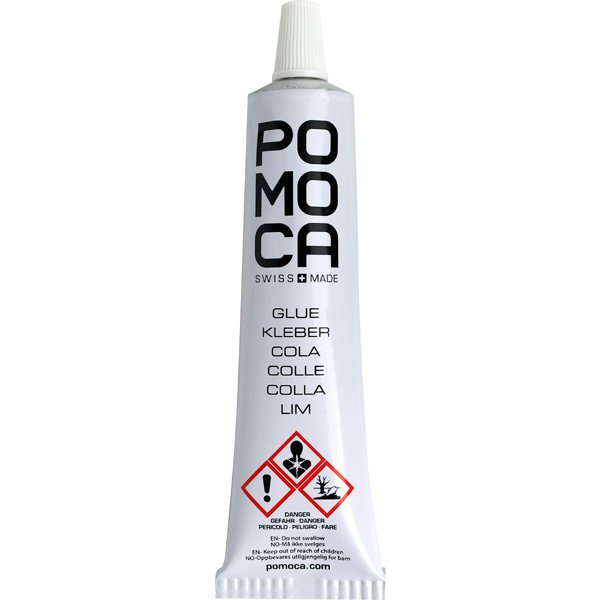
The lifespan of glue is said to be about four years, but the storage environment will also make a big difference. If you want to use it for a long time, the storage method is important.
Storage method
How to store seals that many people care about.
Glue is sensitive to high humidity and high temperatures. During the winter, when you go to the backcountry and come back, stick the cheat sheet neatly and hang it on a hanger to dry. At this time, it is best to dry in a warm, well-ventilated room, not near the stove.
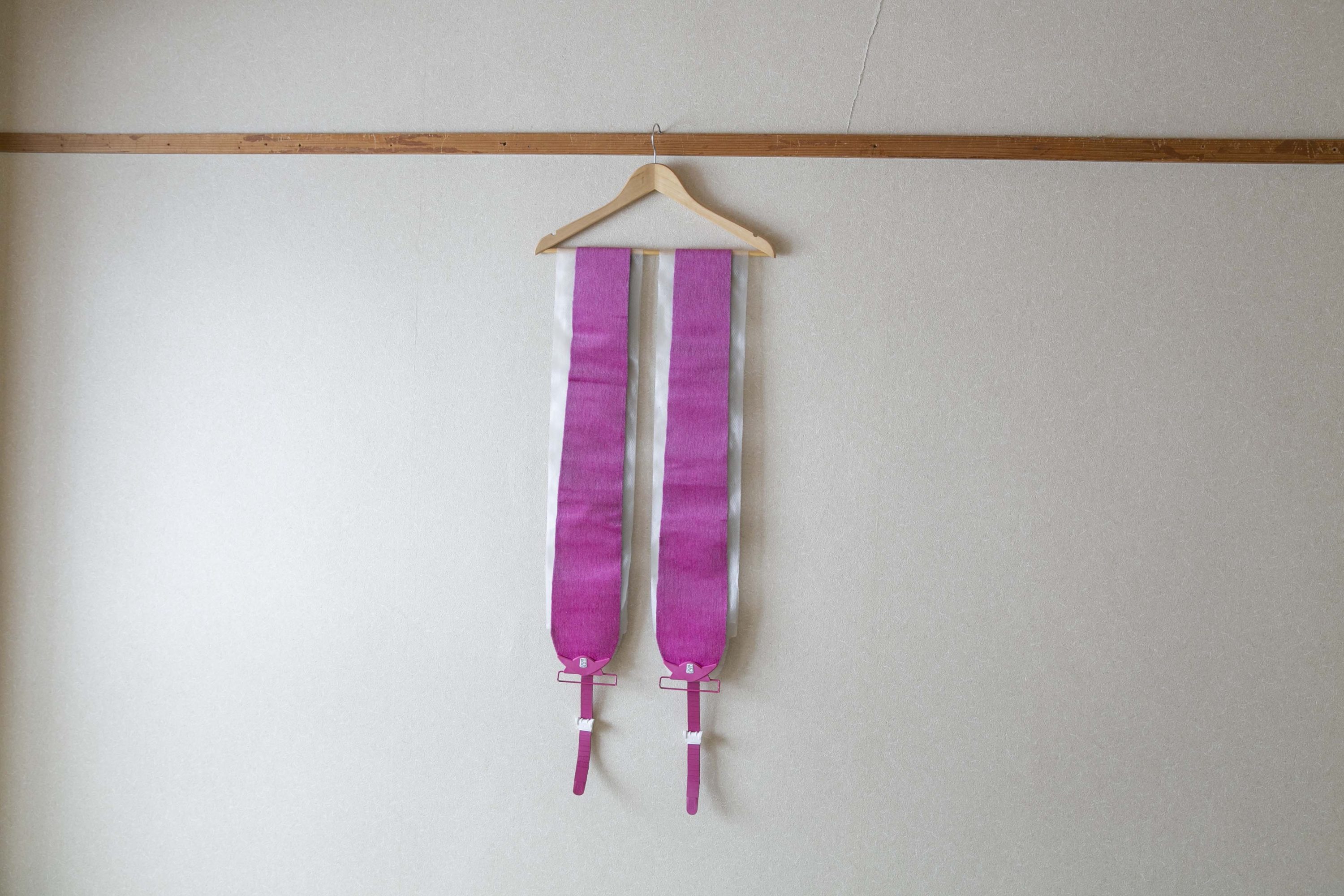
The problem is during the summer.
If you say that you are weak against heat and humidity, summer is your natural enemy. Some people keep it in the refrigerator.
Some people say that, but not all households are allowed to fill precious refrigerator space for the husband's (or wife's, or both's) hobbies. Therefore, it is recommended to store it in a well-ventilated place where it does not get relatively hot, such as near the entrance of a warehouse or garage, or at the entrance if it is not available.
A common useless example is the pattern of storing things in the closet.
This is NG because it easily traps moisture. One of the important equipment as a backcountry item, I want to keep it carefully and use it habitually.
In the next practical section, I would like to explain how to use and store it on site, as well as how to cut seals.
Related Videos
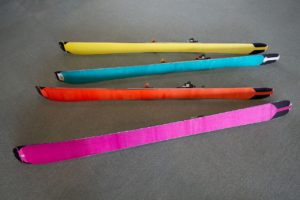
the person who taught me
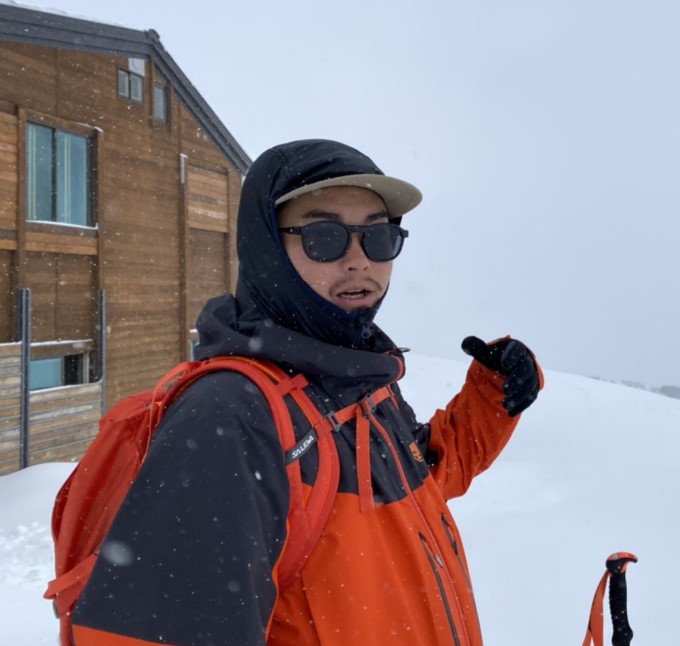
Tomoya Takahashi
is in charge of Japan sales for Dinafit Pomoka. He loves skiing and fishing. Currently, he is taking advantage of remote work and is apprenticing to management of his parents' inn. In the summer, he devotes himself exclusively to fishing and picking edible wild plants.
Cooperation / Rexxam Co., Ltd.

